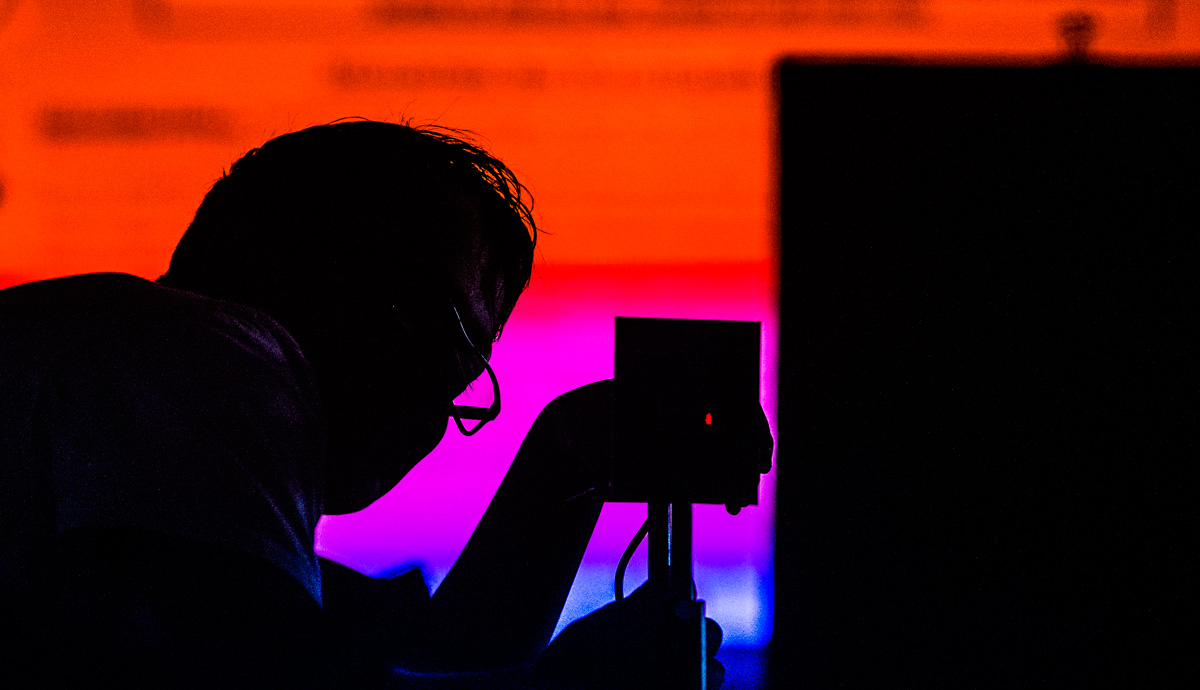February 15, 2016
What keeps physicists awake at night: ripples in space and keeping students out of black holes
Physics researchers the world over are in raptures after Albert Einstein’s 99-year-old prediction was recently confirmed.
Gravitational waves are the idea that there are ripples in space-time: the two entities Einstein's theory of general relativity tied together and what we know as the ‘fabric’ of the universe.
These ripples, observed by scientists working at the Laser Interferometer Gravitational-wave Observatories (LIGO) in the US, give an insight into astronomical events in the distant past and open a new doorway to understanding of the origins of the universe.
The Guardian described the breakthrough as the “...climax of a century of speculation, 50 years of trial and error, and 25 years perfecting a set of instruments so sensitive they could identify a distortion in space-time a thousandth the diameter of one atomic nucleus across a 4 kilometre strip of laser beam and mirror”.
"I couldn’t sleep last night,” UOW School of Physics senior lecturer Dr Enbang Li said of the results, which were confirmed recently (12 February). “One reason was because gravitational waves had not been directly detected with a few decades of efforts.
"It was also exciting because I am now using similar techniques in studying light bending which is another prediction of Einstein’s general theory of relativity, and manipulating light so it travels in only one direction, which will help us develop advanced sensing, and telecommunications technologies.”
Dr Li said Einstein’s general theory of relativity indicated that space-time is warped by the presence of mass (or energy). Any change of mass distribution in the space will correspondingly cause variations in the curvature of the space-time, propagating as the so-called gravitational waves from the source.
"Gravitational waves are extremely weak and therefore hard to detect. The scientists used instruments called laser interferometers, which use laser beams to sense the very tiny path difference caused by the incoming gradational waves.
"Direct detection of the gravitational waves is the most important evidence of the correctness of Einstein’s general theory of relativity. Before they released the results, many people, including myself, doubted if the extremely high sensitivity could be achieved.”
Despite the excitement and elation of these discoveries, physicists are often left wondering why more students don’t take up physics in undergraduate and postgraduate studies.
 "A physics education is the gateway to competence in technology, chemistry, medicine, engineering, environmental science, and even business.” - Dr Enbang Li.
"A physics education is the gateway to competence in technology, chemistry, medicine, engineering, environmental science, and even business.” - Dr Enbang Li.
Making waves in the classroom
In a recent letter published in Physics Today, Dr Li writes about the dilemma of sparking interest in students and translating the importance of the higher-level study of physics in everyday applications.
"A physics education is the gateway to competence in technology, chemistry, medicine, engineering, environmental science, and even business,” Dr Li writes. “However, the dominant public perception is that physics is tedious, abstract, and fundamentally irrelevant. Many university students view physics as difficult or unpleasant and so choose not to pursue degrees in it.”
Part of the solution is to start early. Dr Li works with UOW Discovery Days to show year 12 students the appeal of physics through demonstrations and experiments. This year more than 250 students participated in the physics and medical physics Discovery Days sessions.
Dr Li currently teaches two physics courses: Statistical Mechanics (Thermal Physics) and Electromagnetism, which are core subjects for physics majors and are not for faint-hearted.
"The textbook I use in one of my classes contains more than 1300 equations in the seven chapters covered. Understandably, motivation to learn is important, and the best sort of motivation arises from intrinsic interest or fascination. It’s therefore crucial for instructors to do all they can to stimulate students’ interest in the subject matter.”
Dr Li said he applies four techniques to capture students’ interest: by highlighting major discoveries; introducing recent discoveries; linking physics to everyday life; and using new technologies made possible by physics.
Major discoveries alert students to people who are in some cases household names, such as Werner Heisenberg who in 1932 was awarded a Nobel Prize for his creation of quantum mechanics.
"By discussing those achievements, demonstrating their effects, and adding interesting personal details about the physicists, I hope to increase students’ curiosity and hence to arouse their interest,” Dr Li said.
"On every Friday of the term, I use the first five minutes of the lecture to talk about recently published results related to thermal physics. This helps students make connections between the latest research and the topics in the class.”
No doubt gravitational waves will be the subject of much discussion during this year’s lectures.
Link to everyday objects
Dr Li said telling students about the fundamental and theoretical is ably supported with examples that link physics to everyday life.
"A wide range of everyday devices—from a magnetic resonance imager to the price scanner at the grocery store to smart phones—depend critically on discoveries in physics,” he said. For every topic in Thermal Physics, I prepare at least one example that links to everyday life.”
And the ever-increasing availability of online education resources, lectures have new tools and opportunities to increase students’ conceptual understanding.
"Far from being tedious, abstract, and fundamentally irrelevant, the world of physics continues to amaze, as the discovery of gravitational waves shows," he said. Now, perhaps more than ever, we need bright young minds working on these challenges that change the way we understand the world and the way we live in it.”
Excerpts of Dr Li’s article has been reproduced here with permission from AIP Publishing LLC. Copyright 2016, American Institute of Physics. The original article can be read here.
:format(jpg)/prod01/channel_3/assets/live-migration/www/images/content/groups/public/web/media/documents/mm/uow209913.jpg)